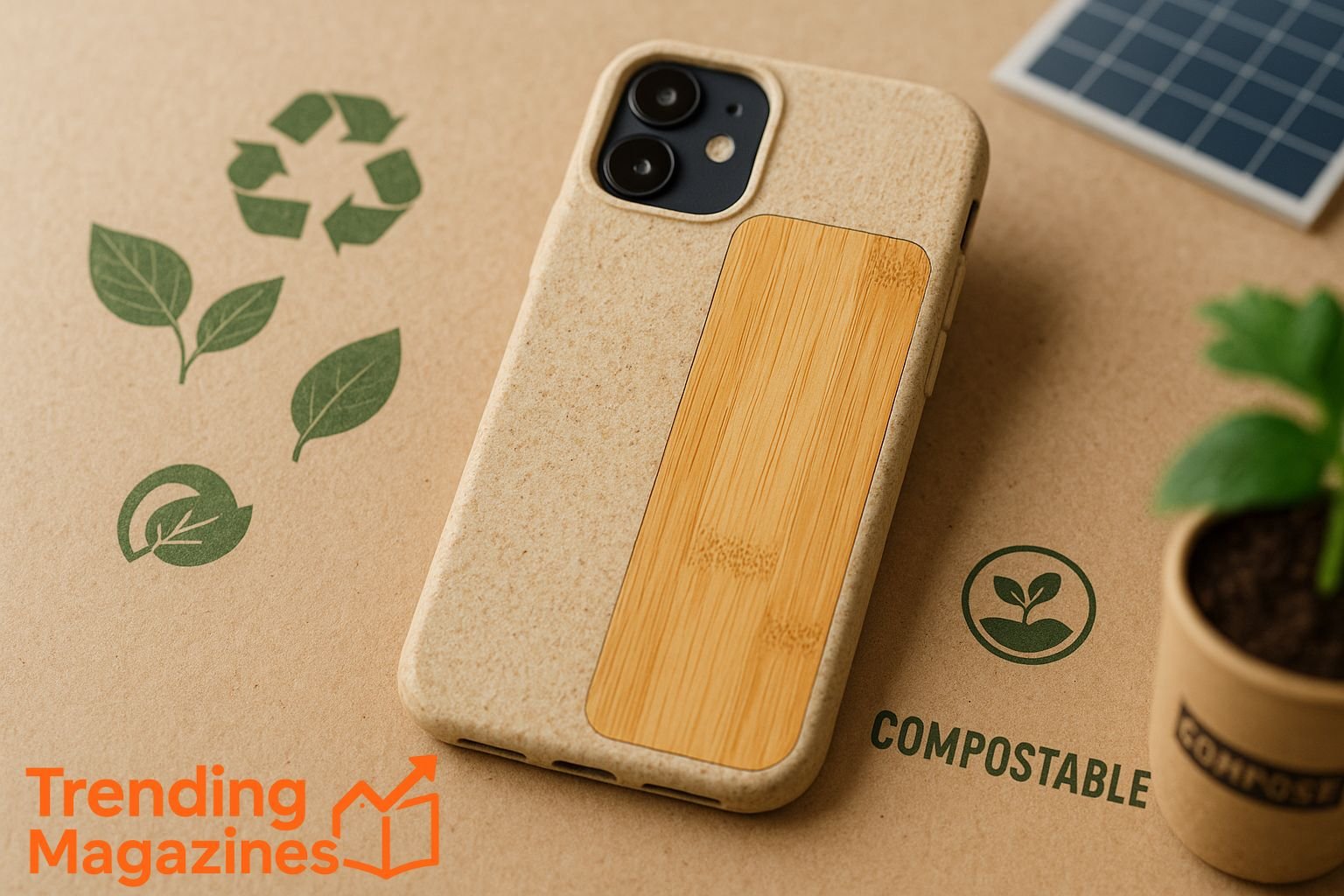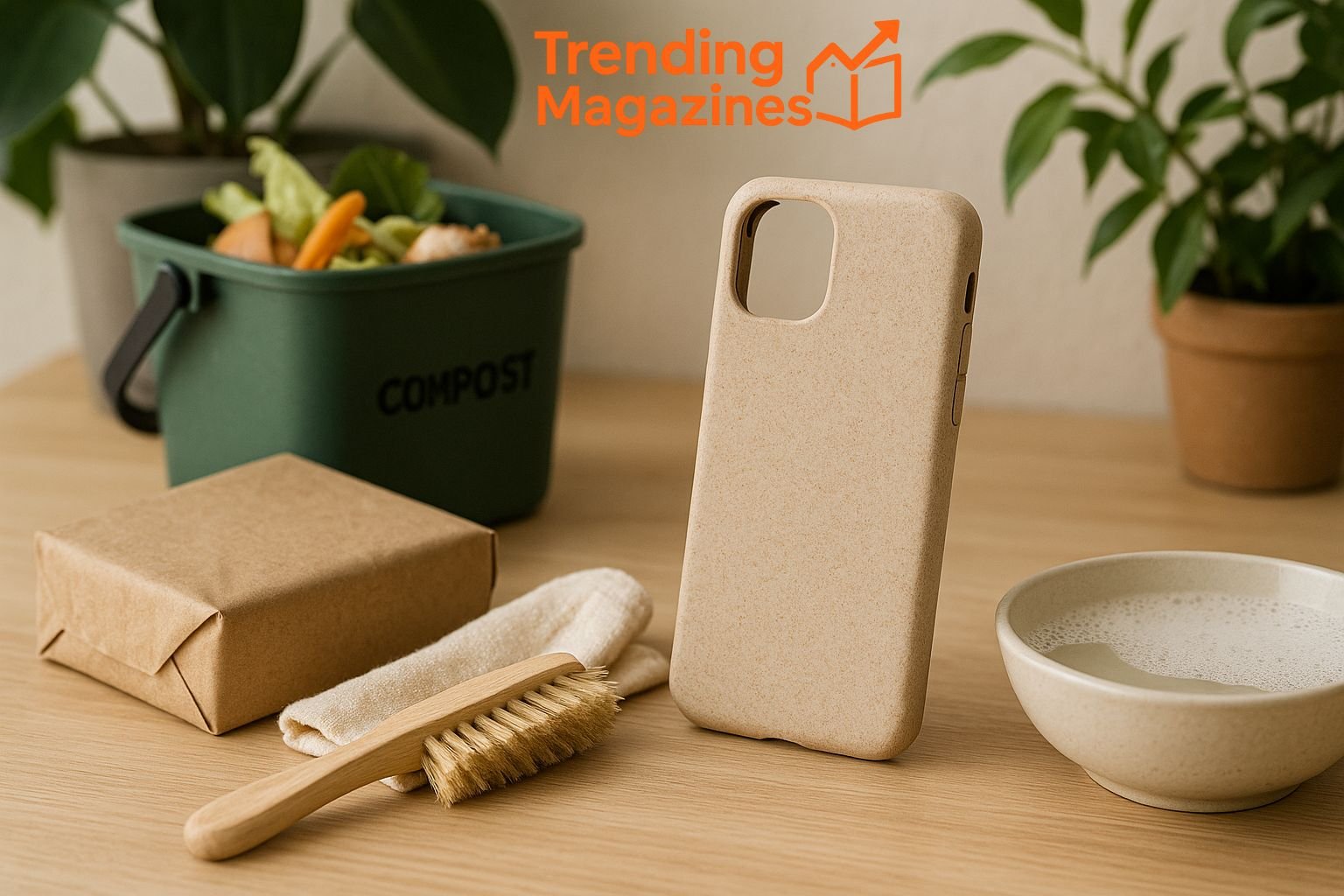Introduction:
Sustainability is no longer an afterthought it’s a responsibility. As millions of smartphones are produced and sold annually, the accessories that protect them, such as phone cases, also contribute significantly to plastic pollution. Enter the eco-friendly phone case: a practical step toward reducing environmental impact without compromising on design or durability.
To understand why these sustainable alternatives are making headlines and shelves, let’s break down how they are made, what makes them different, and why choosing them truly matters.
Table: What Defines an Eco-Friendly Phone Case?
| Key Attribute | Description |
| Materials Used | Plant-based, recycled, biodegradable, or compostable materials |
| Production Process | Ethical manufacturing, low-emission logistics, minimal chemical treatments |
| End-of-Life Strategy | Compostable, recyclable, or reusable through take-back programs |
| Certifications | Verified by B Corp, GOTS, FSC, etc. |
| Environmental Impact | Reduced carbon footprint, less ocean plastic, no microplastic shedding |
| Design Philosophy | Minimalist, durable, aesthetic, and often modular |
The Materials That Make a Difference
Plant-Based and Renewable Materials
Most eco-friendly phone cases are made from materials like flax straw, bamboo fiber, cork, wheat straw, or biopolymers derived from cornstarch or sugarcane. These renewable resources form the base for compostable and biodegradable cases, helping reduce dependency on petroleum-based plastics.
Recycled and Upcycled Elements
Another approach is the use of post-consumer waste. Many brands repurpose recycled TPU, silicone, or even ocean plastic. This contributes to a circular economy, giving waste a second life rather than contributing to landfill overflow or marine pollution.
Biodegradability and Compostability: Know the Difference
While biodegradable products break down naturally over time, compostable products decompose faster and under specific conditions, often within industrial composting facilities. It’s essential to understand whether a case is home compostable or needs a commercial setup, as this affects disposal.
Behind the Scenes: Manufacturing Eco-Friendly Phone Cases
Ethical and Low-Impact Production
Sustainable brands often prioritize ethical labor, fair wages, and transparency in their supply chain. They reduce energy consumption through low-emission logistics and solar-powered manufacturing, aligning with climate-friendly goals.
Non-Toxic Binders and Dyes
Traditional phone cases often contain toxic adhesives and synthetic dyes. Eco alternatives use non-toxic, often natural binders, and vegetable or water-based dyes. This ensures safer products for both consumers and the environment.
Durability Meets Minimalism
An eco-friendly phone case doesn’t sacrifice protection. They’re engineered to provide shock absorption and prevent yellowing or cracking. Longevity is key to sustainability if a case lasts, it reduces consumption cycles.
Why Choosing a Sustainable Phone Case Matters
Reducing Plastic Waste and Ocean Pollution
More than 1 billion phone cases are discarded each year, many ending up in landfills or oceans. These plastics break down into microplastics, entering marine food chains. Choosing a biodegradable or recycled case directly reduces this environmental footprint.
Lowering Carbon Emissions
From raw material extraction to product delivery, every step has a carbon cost. Eco-conscious brands calculate and offset this through tree planting, carbon credits, and local sourcing. The goal? Achieve or approach carbon neutrality.
Ethical Consumption and Conscious Consumerism
Choosing a sustainable accessory is a vote for responsible production. It supports businesses that value environmental responsibility and fair labor practices. This shift in consumer behavior pressures the industry to rethink its practices.
Key Certifications to Look For
If you’re not sure whether a phone case is truly eco-friendly or just cleverly marketed, here are certifications that indicate authenticity:
- B Corp: Verifies social and environmental performance
- GOTS: Focuses on organic textile processing
- FSC: Ensures responsible forest management for wood/paper elements
- OK Compost / TÜV Austria: Confirms compostability standards
These certifications promote transparency and reduce greenwashing.
The Lifecycle of an Eco-Friendly Phone Case
Understanding a product’s lifecycle is critical to evaluating its sustainability.
1: Raw Material Sourcing
Materials are chosen based on renewability, ethical sourcing, and minimal emissions.
2: Production and Assembly
Using minimal water, energy, and waste often with solar-powered facilities.
3: Consumer Use Phase
Designed for long-term use, often antibacterial and discoloration-resistant.
4: End-of-Life Disposal
Compostable at home or in industrial settings, or sent back through take-back programs.
Common Types of Sustainable Phone Cases
Compostable Cases
Made from plant-based biopolymers, often combined with flax or wheat fibers. Ideal for consumers looking for zero-waste lifestyle options.
Recycled Plastic Cases
Manufactured from recycled ocean plastic or post-consumer rubber and TPU. Perfect for those supporting circular economy principles.
Bamboo and Cork Cases
Natural fiber composites like cork offer antimicrobial benefits and unique aesthetics. Bamboo cases are lightweight and sturdy.
Modular Cases
Designed for disassembly, where parts can be replaced or recycled individually, reducing overall waste.
What to Watch Out For: Greenwashing
Not all “eco” labels are legitimate. Be wary of vague claims like “earth-friendly” or “eco-safe” with no backup. Always check for material disclosure and lifecycle assessment details.
Choosing the Right Eco-Friendly Case for Your Needs
When shopping, consider these factors:
- Material Transparency: What’s it made from? Is it fully disclosed?
- Certifications: Are the environmental claims backed by third-party verification?
- Disposal Method: Does the brand offer a take-back program or guide on composting?
- Design and Fit: Will it protect your phone while reflecting your style?
The Future of Sustainable Phone Accessories
As environmental awareness grows, innovation continues. Expect to see increased use of bioplastics, regenerative sourcing practices, and closed-loop manufacturing. Brands are also expanding into eco-friendly tech accessories beyond phone cases, creating a full spectrum of low-impact mobile lifestyle products.
Final Thoughts:
Every small decision matters in the larger environmental context. By opting for a sustainable phone case, you’re not just protecting your device you’re protecting ecosystems, supporting ethical labor, and reducing waste.
As more consumers adopt eco-conscious habits, demand will drive innovation, leading to better products and cleaner processes. The future is shaped by what we choose today—and choosing an eco-friendly phone case is a step in the right direction.
FAQs
Are biodegradable phone cases truly better for the environment?
Yes, when disposed of correctly, they decompose into organic matter without leaving harmful residues, unlike petroleum-based plastics.
Can compostable phone cases be composted at home?
Some can, but many require industrial composting. Look for certifications like OK Compost Home or check the brand’s disposal guide.
How long does an eco-friendly phone case last?
With proper care, they last as long or longer than traditional cases. Durability is a core focus in sustainable design.
What is the best material for a sustainable phone case?
There’s no one-size-fits-all answer. Bamboo, cork, recycled TPU, and biopolymers each have pros and cons. Choose based on your values biodegradability, recyclability, or aesthetics.
Do eco cases offer strong drop protection?
Yes. Many are lab-tested to meet military-grade drop standards without using conventional plastic shells.




